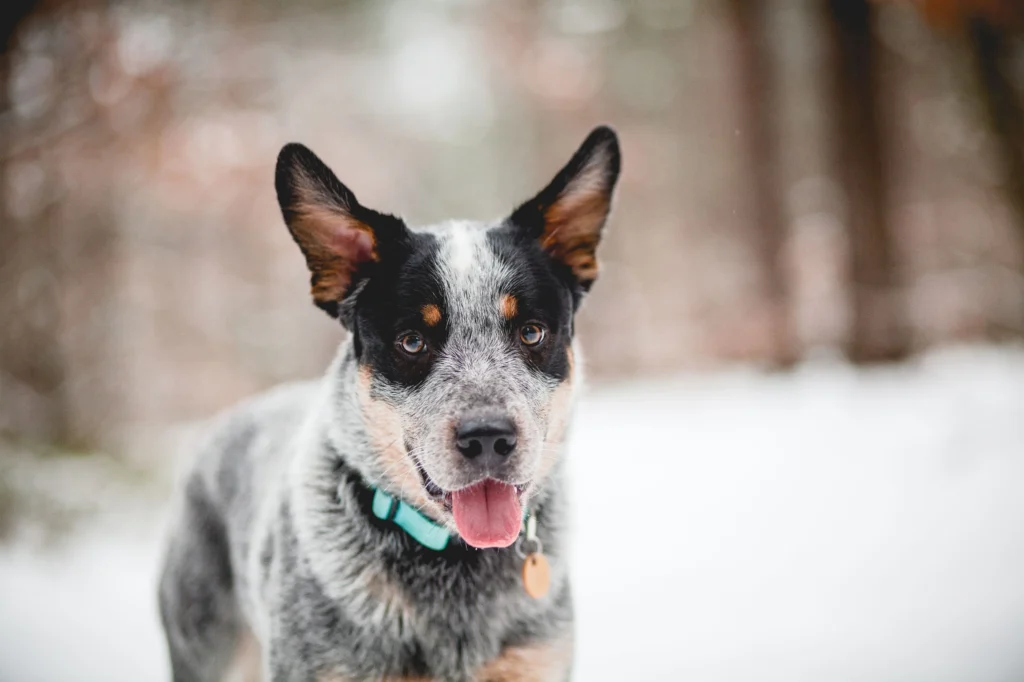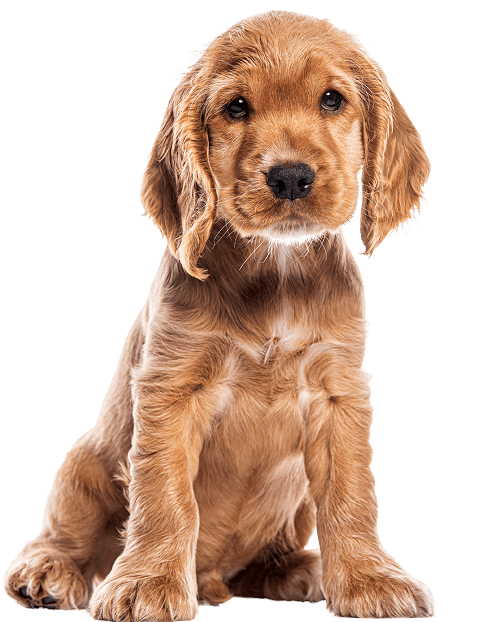
Introduction
Australian Cattle Dog shines as a smart, energetic, and loyal companion. This breed suits active homes, farms, and outdoor lovers perfectly. In this guide, you learn history, traits, care, training, and adoption tips. Every tip stays simple, clear, and ready for easy action.
History and Origin
The Australian Cattle Dog emerged in 1800s Australia. Ranchers needed dogs to herd cattle over harsh outback terrain. Breeders crossed British Collies, Dingoes, and native dogs. They selected for stamina, intelligence, and fearless work drive. The nickname Blue Heeler came from blue-speckled coats. Red Heeler lines also developed with red speckle patterns. The breed helped tame vast cattle before motorized transport. Australian Cattle Dog joined the American Kennel Club in 1980. Today, it earns respect in working trials and sport rings.
Appearance and Coat
Australian Cattle Dog stands 17 to 20 inches at shoulder. Males weigh 35 to 50 pounds, females slightly less. They sport a dense, weather-resistant double coat in blue speckle. Red speckle variants show solid rust and white base colors. Their ears stand erect, eyes dark, and muzzle strong. A sturdy, muscular build highlights their agile, athletic frame. Tails are straight or slightly curved, carried low at rest. Coat patterns serve as natural camouflage in working conditions.
Temperament and Personality

This breed shows high intelligence and confident energy. They bond strongly with their human family members. Australian Cattle Dog guards home with calm protective instincts. They greet strangers politely once given proper introduction. This dog remains loyal, brave, and independent by nature. They respect clear leadership while craving meaningful work tasks.
Training and Socialization
Early training molds a balanced Australian Cattle Dog puppy. Use positive reinforcement like treats, praise, and play. Keep sessions short—five to ten minutes each session. Schedule routine socialization with people, pets, and noises. Consistency prevents stubborn behavior in this intelligent breed. Enroll in puppy kindergarten for extra structure and fun.
Puppy Training
Begin crate training when your puppy arrives home. Provide a comfy crate and reward entry with treats. Set a potty schedule to establish housebreaking routine. Praise your puppy for going outside every time. Supervise indoors to catch accidents before they occur.
Advanced Training
Australian Cattle Dog masters complex tricks and commands. Teach “heel,” “back up,” and directional herding simulations. Use variable reinforcement to maintain high motivation long-term. Introduce agility jumps, tunnels, and weave poles gradually. Challenge your dog monthly with fresh tasks and puzzles.
Mental Stimulation and Games
This breed craves mental challenges and problem solving. Offer puzzle toys, treat dispensers, and scent games daily. Play hide-and-seek by hiding treats around the yard. Teach new commands like “find it” to sharpen focus. Rotate games every week to prevent boredom or escape attempts.
Exercise Needs

Australian Cattle Dog needs at least two hours of daily exercise. Plan brisk walks, runs, or long hikes through nature trails. Set up farm chores or herding simulations if available. Include fetch, tug, or ball drills in a fenced space. Avoid long exercise under extreme heat to prevent overheating. Use a secure yard to prevent roaming off-leash risks. Mental work often tires this breed as much as physical play.
Safety and Environment
Australian Cattle Dog thrives in large fenced yards. Ensure secure, tall fences to contain active runners. A covered top fence section may prevent agile escapes. Provide shaded areas and fresh water all day outdoors. Remove small hazards like toxic plants from your yard.
Nutrition and Diet
Feed your Australian Cattle Dog a quality, protein-rich dog food. Aim for at least 25 percent protein content per meal. Divide daily food into two balanced, timed portions. Offer fresh water constantly, especially after exercise. Limit treats to less than ten percent of daily calories. Consult your veterinarian for special allergy or joint diets. Rotate proteins periodically to prevent food sensitivities.
Grooming and Coat Care
Brush the coat weekly to control loose hairs and debris. Use a slicker brush and undercoat rake during shedding seasons. Bathe only when needed to maintain natural skin oils. Dry thoroughly, as dampness can lead to skin infections. Trim nails every two to four weeks for paw comfort. Clean ears weekly to prevent wax buildup and infections. Brush teeth three times a week to avoid dental issues. Invest in quality grooming tools for smoother coat maintenance.
Health and Common Issues
Australian Cattle Dog enjoys robust health and long lifespan. Average life expectancy spans 13 to 15 active years. Hip dysplasia affects some lines—screen breeding dogs early. Progressive retinal atrophy can lead to gradual vision loss. Blue merle dogs may face higher deafness rates, test early. Bloat poses life-threatening risks—serve smaller meals slowly. Prevent parasites with year-round flea, tick, and heartworm protection. Keep vaccinations current to guard against contagious diseases. Maintain a healthy weight to ease joint and back strain.
Living with an Australian Cattle Dog

This breed fits active households with room to roam. They adapt to suburban homes, farms, and ranches easily. Apartment living works if you provide intense daily exercise. Use baby gates to block off dangerous or fragile areas. Offer a cozy crate or den for quiet, personal retreat. Family walks, chores, and playtimes strengthen your bond. Avoid leaving them alone too long to prevent separation stress. Rotate toys and games to keep life interesting each day. Teach children respectful handling to avoid nipping or herding.
Behavioral Challenges and Solutions
Australian Cattle Dog can show strong prey drive around cats. They may try to herd children by nipping at ankles. Redirect nipping with chew toys and firm “leave it” commands. Use consistent boundaries to curb dominant or aggressive traits. Offer ample exercise to reduce excess energy and restlessness. Seek professional help for severe anxiety or aggression issues. Early prevention and positive training avoid most later problems.
Herding Instincts and Jobs
Australian Cattle Dog lives for herding and farm chores. They excel at gathering livestock in tight spaces. Many owners join herding clubs or farm working trials. Simulated herding games mimic real cattle driving tasks. This breed also shines in agility, flyball, and obedience. Challenging work outlets satisfy their natural instincts fully. Consider herding lessons to refine skills and strengthen bonds.
Travel and Vacation Tips

Australian Cattle Dog travels well with proper planning. Use a secure crate or crash-tested harness in vehicles. Pack a travel kit with food, water, and first-aid supplies. Bring favorite toys and bedding to reduce travel stress. Plan rest stops for exercise and bathroom breaks every two hours. Research dog-friendly hotels and park rules before trips. Monitor local wildlife hazards like snakes or ticks in areas.
Finding and Adopting
Choose a reputable breeder who shares health screening records. Ask for OFA hip certification and CERF eye exam clearances. Visit the breeder’s facility to observe puppy living conditions. Meet both parents to gauge temperament and physical traits. Consider rescue groups offering adult Australian Cattle Dogs. Adoption fees often cover initial vaccines and health exams. Prepare your home with crate, bed, bowls, and leash ahead. Schedule a vet visit within the first week after adoption. Join breed clubs for support, training tips, and community events.
Fun Facts
Australian Cattle Dog holds the world’s oldest dog record at 29 years. Its ancestor Dogs were key partners in historical cattle drives. The breed’s coat speckles helped hunters spot dogs in tall grass. AKA Heelers, they earned respect for nipping at cattle hocks. This breed featured in movies like “Babe” and “Red Dog.” They respond swiftly to hand signals, thanks to their sharp minds.
Australian Cattle Dog in Popular Culture
Australian Cattle Dog appeared in the Disney film “Snow Dogs.” They served as search and rescue dogs in real emergencies. Ranchers worldwide still rely on them for hardworking herding jobs. They inspired the “Bluey” character in a popular children’s show. Their bold, loyal image symbolized the rugged Australian spirit.
Conclusion
Australian Cattle Dog excels as a devoted, intelligent, and energetic breed. This guide covered history, traits, care, training, and adoption steps. Provide mental challenges, consistent training, and daily exercise. Maintain grooming, health checks, and a balanced, protein-rich diet. Your active lifestyle and kind leadership will help this breed thrive. Enjoy every adventure with your loyal Australian Cattle Dog companion.
Read More: Chow Chow Dog Breed: Ultimate Guide to Care & Training
Reference: Wiki

